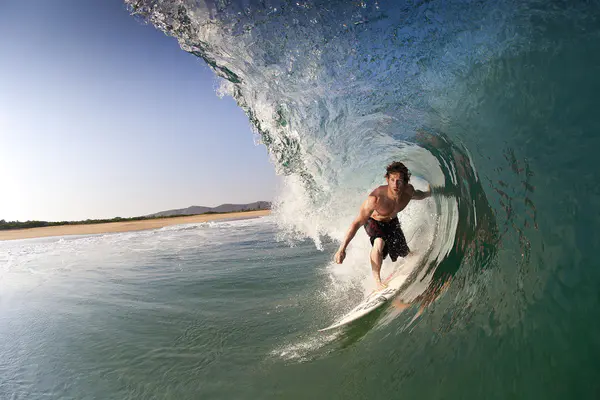Surfing is an exhilarating sport that connects riders with the ocean in a dynamic and challenging way. One of the critical areas of focus in surfing is the “impact zone.” This term refers to a specific region in the water where surfers encounter the most intense wave action. Understanding the impact zone is crucial for surfers of all levels, as it affects wave selection, positioning, and overall safety.
Defining the Impact Zone
What Is the Impact Zone?
The impact zone is the area where waves break with the most force. It’s where the surf is most turbulent and challenging. When surfers talk about the impact zone, they refer to the part of the ocean where the waves are at their peak power and where the most significant and potentially dangerous wave activity occurs.
Characteristics of the Impact Zone
- Wave Break: The impact zone is where waves start to break. This breaking process causes the water to churn and become turbulent.
- Height and Power: Waves in this zone are typically larger and more powerful than those farther out to sea or closer to the shore.
- Turbulence: The water in the impact zone can be very rough, making it challenging for surfers to navigate.
Importance of the Impact Zone in Surfing
Why Surfers Need to Know About the Impact Zone
Understanding the impact zone is crucial for several reasons:
- Wave Selection: Surfers need to choose waves wisely. Knowing where the impact zone is helps in selecting the right wave to ride.
- Positioning: Proper positioning in the water is essential for catching waves and avoiding collisions.
- Safety: Being aware of the impact zone helps in navigating through it safely, minimizing the risk of injury.
Effects on Surfing Techniques
- Paddling: Surfers often need to paddle through the impact zone to reach the waves they want to ride. This requires strength and technique.
- Timing: Timing is critical when entering and exiting the impact zone. Surfers need to anticipate when to paddle and when to duck dive under breaking waves.
- Handling Waves: Techniques for handling waves are influenced by the characteristics of the impact zone. Surfers must adapt their strategies based on wave size and power.
Navigating the Impact Zone
Techniques for Getting Through the Impact Zone
- Duck Diving: This technique involves diving under incoming waves to avoid being pushed back by the force of the water.
- Paddling Through: Surfers can paddle through the impact zone by timing their strokes to coincide with the breaks in the waves.
- Positioning: Proper positioning can help surfers minimize the time spent in the most turbulent areas of the impact zone.
Strategies for Safe Surfing
- Timing Your Entry: Entering the impact zone at the right time is crucial. Surfers should wait for a lull in the wave action before entering.
- Wave Reading: Understanding how waves break and where the strongest currents are can help surfers navigate the impact zone more effectively.
- Staying Calm: Maintaining composure in the impact zone helps surfers manage the challenges posed by powerful waves and rough water.
The Impact Zone and Wave Types
Different Types of Waves and Their Impact Zones
- Beach Breaks: Waves that break over sandy bottoms. The impact zone can shift depending on the tide and sandbars.
- Reef Breaks: Waves that break over coral reefs or rocky bottoms. The impact zone can be more localized and potentially hazardous.
- Point Breaks: Waves that break along a point or headland. The impact zone is often more predictable but can still be challenging.
Impact Zone Variations
- Tidal Changes: The position and characteristics of the impact zone can change with the tides.
- Weather Conditions: Wind and weather can influence the impact zone, making it more or less challenging.
Training and Preparing for the Impact Zone
Physical Conditioning
- Strength Training: Building upper body and core strength is essential for paddling through the impact zone.
- Endurance Training: Improving cardiovascular fitness helps surfers handle the physical demands of navigating turbulent waters.
Skill Development
- Wave Knowledge: Learning about different types of waves and their impact zones helps surfers prepare for various conditions.
- Techniques Practice: Regular practice of techniques like duck diving and positioning can improve performance in the impact zone.
Safety Considerations
Risks Associated with the Impact Zone
- Injury Risks: Surfers can sustain injuries from collisions with the board, other surfers, or the ocean floor.
- Drowning Risks: The powerful waves and strong currents can pose a risk of drowning if surfers are not prepared.
Safety Measures
- Surfing with a Buddy: Surfing with a partner can enhance safety and provide support in challenging conditions.
- Using Safety Equipment: Wearing a leash and other safety gear can help prevent accidents and improve overall safety.
Case Studies and Real-World Examples
Famous Surf Spots and Their Impact Zones
- Pipeline, Hawaii: Known for its powerful waves and challenging impact zone.
- Teahupo’o, Tahiti: Features some of the most intense impact zones in surfing.
- Jeffreys Bay, South Africa: Offers a unique impact zone with its long, fast waves.
Surfer Experiences
- Interviews and Stories: Insights from experienced surfers about their experiences with the impact zone.
See Also: What Is a Kook in Surfing Terms
Conclusion
In conclusion, the impact zone in surfing is a crucial area that requires careful attention from surfers. It is the place where the wave breaks and creates a powerful surge of water that can be dangerous for those caught in its path. Surfers must be aware of their own abilities and the conditions of the ocean floor to safely navigate the impact zone. By staying outside of this zone, they can ride waves effectively while minimizing the risk of injury. With practice and experience, surfers can develop the skills needed to successfully navigate the impact zone and take their surfing to new heights.

